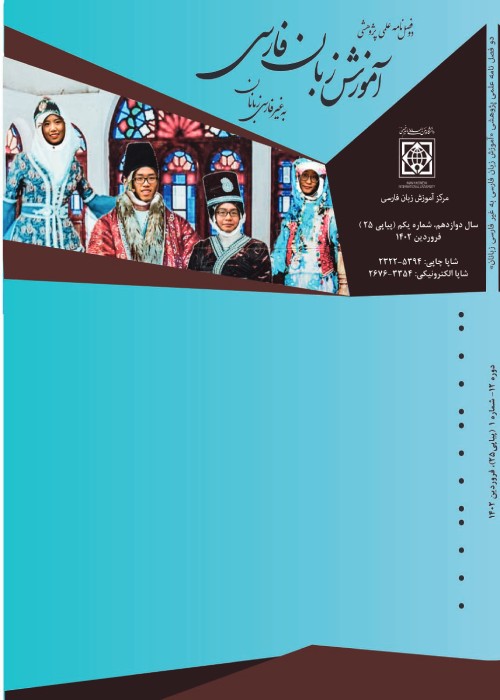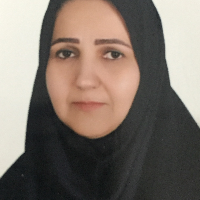Extraction of Core Medical Terms Using Frequency Approach
Author(s):
Article Type:
Research/Original Article (دارای رتبه معتبر)
Abstract:
During the past two decades, use of corpus-based approaches in language teaching and design of teaching materials has increased remarkably. The goal of the present study was to achieve an automatic approach in extracting medical terms from corpora in Farsi. To achieve the purpose, classic and statistical measurement-based methods of frequency counting were used and the capability of each single approach was compared with the other one. Classic frequency approaches include: General corpus frequency, Special corpus frequency and their enhanced techniques. Results showed that in classic approaches, special term extraction process can be improved by utilizing some techniques and among them, the best performance related to the improved frequency approach in special corpus which covered 60% of the special terms by 50 terms. Chi-square and PMI verified the possibility of using corpus-based frequency approaches in Farsi. Chi-square with extraction of %32 and PMI with extraction of 52% of special terms performed appropriately in automatic special term extraction. Overall, the results of applying these approaches on corpora and their comparison showed that statistical measurement approaches are appropriate for automatic term extraction and hence we will face a modern change in preparing teaching materials and teachers could access lists of words which are useful and occasionally essential for language learners. Extended AbstractOver the past few decades, with the advancement of technology, the use of corpora in linguistic studies has dramatically increased. Linguistic corpuses provide linguistic experts with the possibility to apply different methods for linguistic analysis by providing large collections. Most of the studies that have been done so far have been in English, French, and Japanese, and limited research has been conducted in Farsi language, and this lack, especially in specialized fields such as medical sciences, mathematics, science, tourism and so on is so tangible. So far most of the term or vocabulary extractions in Farsi have been done by using non-automatic methods and through reading and collecting data by the researchers; however, due to the technical properties of Farsi language, using non-Farsi term extractors which have been quite successful in other languages such as English, French and Japanese, have been impossible to use in Farsi so far. This is because of the particularities and specific features of languages. Each of these extractors is defined based on the features and properties of language they have been used for. In order to improve teaching materials in Farsi, paying attention to this problem was of paramount importance and we decided to apply some of these extraction methods and devise an extraction method for Farsi language which works properly. Since Iran’s universities admit a lot of non-native Farsi international students annually whose goal is to study at fields such as medicine, engineering and humanities, preparing standard modern teaching materials in Farsi, which are based on the most modern technologies, is significantly important .The purpose of this study was to improve the resources used in teaching Farsi language at university levels, especially for non -native Farsi speakers and to explore the feasibility of using frequency-based methods in the automatic extraction of core medical terms and comparing the capabilities of each method. Findings of the research reveal the strengths and weaknesses of these methods in Farsi language and explore the possibility of using each of these methods in Farsi and provide technical solutions for the improvement of the results. Research
Methodology
The frequency counting approaches utilized in this study included the general and a specialized corpus which was created by the researcher. The general corpus used in this study was the Hamshahri Corpus and the specialized researcher made corpus included: texts from the science books of grades 1-4 of senior high schools and grades 1-3 of junior high schools in Iran, science courses in Imam Khomeini Farsi language center, general medicine texts from journals and internet. After the formation of the corpus, preparation and tokenization, the research introduced two methods of frequency i.e. classical and modern categories. Then, in the next step, the capabilities of each method were compared. The methods used in the classical frequency approach were the frequency of the main general corpus, the frequency of the specialized corpus and their improved approaches. Also, modern methods used in the research were: PMI and Chi-square. Pearson correlation analysis and trend analysis were also used to compare the methods used in the research. Research findings The results showed that classical methods in their general form, have little accuracy in identifying specialized vocabulary, however, by applying some techniques, it was possible to improve the process of selecting specialized vocabulary, among which the best performance related to the improved numerical method in the specialized corpus which resulted in extracting 60% of the specialized vocabulary in the first 50 high-frequency words. This result improved by increasing the scope of the study to 100, 150 and 200 first extracted words and it was observed that the percentage of specialized vocabulary identified increased by about 75%. Moreover, the results obtained for modern methods indicated that these methods can be used in Farsi. It can be seen that chi-square method with 32% and PMI method with 52% extraction of specialized vocabulary in the first 50 high frequency words showed a good function in automatic term extraction in Farsi. They automatically detected specialized vocabulary and by increasing the scope of the study to 200 first words, these percentages improved. Conclusion
The results of the research showed that frequency-based methods are applicable in Farsi. If we use classic frequency methods, we will need to utilize improved classic frequency methods in order to increase the accuracy of extracted words. Also, in order to achieve reliable results in modern frequency approaches, it is necessary to choose large enough vocabulary scope for the extracted vocabularyKeywords:
Language:
Persian
Published:
Journal of Teaching Persian to Speakers of Other Languages, Volume:8 Issue: 17, 2019
Pages:
227 to 244
magiran.com/p2043501
دانلود و مطالعه متن این مقاله با یکی از روشهای زیر امکان پذیر است:
اشتراک شخصی
با عضویت و پرداخت آنلاین حق اشتراک یکساله به مبلغ 1,390,000ريال میتوانید 70 عنوان مطلب دانلود کنید!
اشتراک سازمانی
به کتابخانه دانشگاه یا محل کار خود پیشنهاد کنید تا اشتراک سازمانی این پایگاه را برای دسترسی نامحدود همه کاربران به متن مطالب تهیه نمایند!
توجه!
- حق عضویت دریافتی صرف حمایت از نشریات عضو و نگهداری، تکمیل و توسعه مگیران میشود.
- پرداخت حق اشتراک و دانلود مقالات اجازه بازنشر آن در سایر رسانههای چاپی و دیجیتال را به کاربر نمیدهد.
In order to view content subscription is required
Personal subscription
Subscribe magiran.com for 70 € euros via PayPal and download 70 articles during a year.
Organization subscription
Please contact us to subscribe your university or library for unlimited access!




